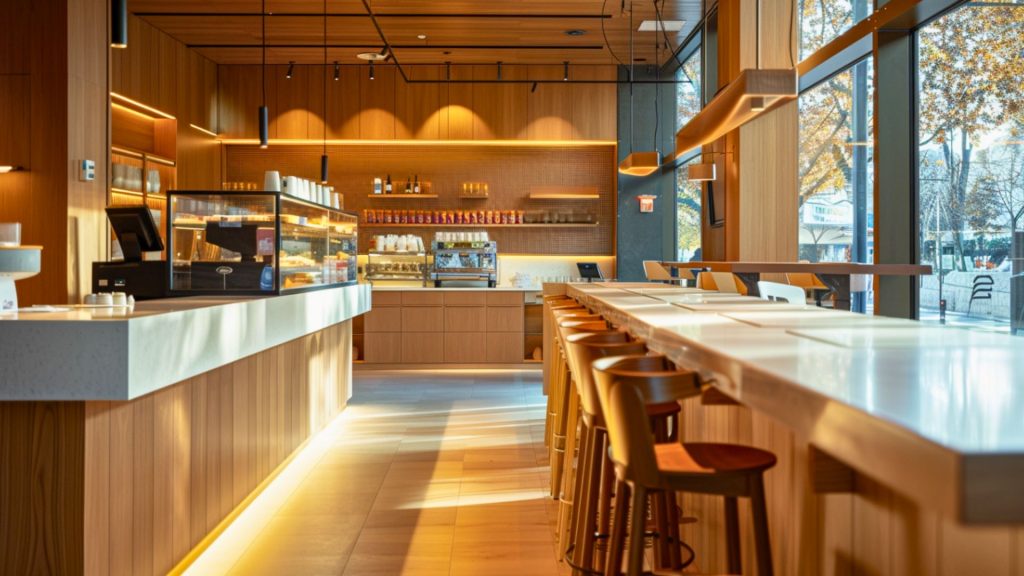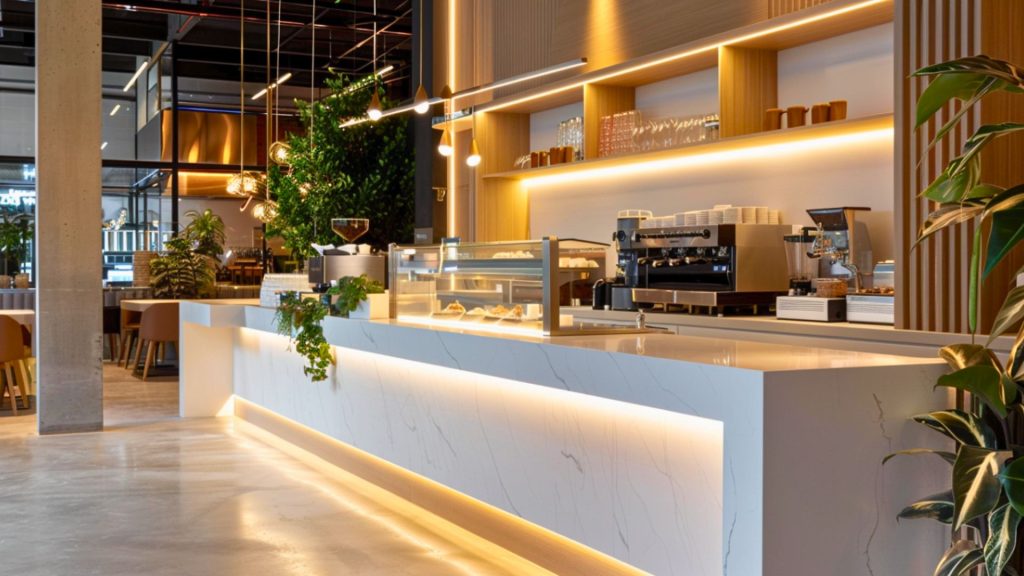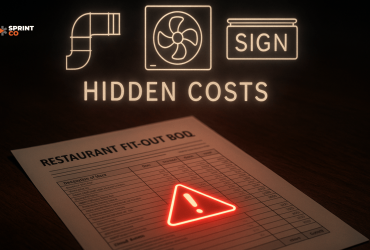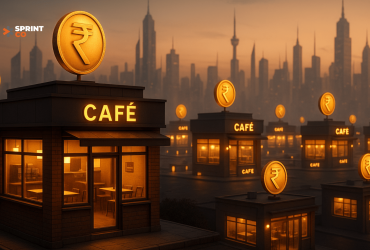2025 Restaurant Design Trends: Smart Materials That Maximize Space
In restaurant design, space is a luxury — but perception is power.
Even when square footage is limited, the right materials and finishes can make a compact outlet look expansive, bright, and thoughtfully designed.
The secret?
Understanding how texture, tone, and reflection influence how guests feel in a space. In 2025, designers are using material psychology as much as material science — creating interiors that don’t just save space, but create it.
1. The Illusion of Space Is Sensory, Not Structural

When we think of space, we often think of walls and dimensions. But what truly defines a restaurant’s spaciousness is the sensory experience — the way light bounces, the warmth of textures, and the airiness of surfaces.
The right materials can make a 400 sq. ft. café feel open and inviting — while the wrong palette can make a 1000 sq. ft. restaurant feel cramped.
Design principle to remember:
You don’t always need more space. You need smarter materials.
2. Lighter Woods: Birch and Light Oak for Warmth & Openness

Lighter wood tones like birch and light oak are redefining restaurant furniture design in 2025. They introduce a sense of airiness and calm that visually expands interiors.
Why it works:
- Reflects natural and artificial light beautifully.
- Adds warmth without heaviness.
- Complements both minimalist and earthy interiors.
Use it for: tabletops, wall claddings, or ceiling panels to make compact dining areas feel more breathable and organic.
3. Metal Accents: Minimalism Meets Durability

When used right, metal isn’t cold — it’s confident.
Metal frames, trims, and detailing add structure and sophistication, while maintaining an uncluttered visual language.
Benefits:
- High durability in high-traffic zones.
- Ideal for modular or foldable furniture systems.
- Reflective surfaces subtly open up enclosed spaces.
In 2025, we’re seeing a shift toward brushed bronze and matte black metals — balancing strength with a muted, modern aesthetic.
4. Compact Laminate and Quartz: Sleek, Clean, and Space-Efficient

Compact laminate and quartz have become designer favorites for restaurants seeking both beauty and resilience.
Why they’re trending:
- Easy to clean and maintain — critical for high-turnover outlets.
- Their smooth, reflective finishes amplify light and airiness.
- Perfect for countertops, bar areas, and service counters.
These finishes bring a sense of refinement that feels high-end without overcrowding the visual palette.
5. Layering Textures Without Adding Weight

Maximizing space doesn’t mean going flat.
Layering textures — matte, gloss, woodgrain, and metal — adds depth and character without making interiors feel heavy.
Try this:
Combine birch wood furniture with matte black metal legs and a soft quartz counter.
The interplay of textures keeps the space interesting while maintaining visual flow.
6. Designing for Reflection, Not Clutter

In tight spaces, light is your biggest ally.
Use reflective finishes, metallic trims, and soft-gloss surfaces to enhance brightness and openness.
Avoid heavy, dark materials that absorb light — they visually shrink the room.
Instead, opt for tones that bounce light back into the space, creating a subtle illusion of expansion.
Conclusion: Every Surface Shapes Perception
The smartest restaurant interiors of 2025 aren’t necessarily the biggest — they’re the most intentionally designed.
By choosing the right mix of materials and finishes — from warm woods to reflective metals — you can create a space that feels twice as large, twice as inviting, and infinitely more memorable.
Because in the end, great design doesn’t just fill a space — it transforms it.
Use reflective finishes, metallic trims, and soft-gloss surfaces to enhance brightness and openness.
Avoid heavy, dark materials that absorb light — they visually shrink the room.
Instead, opt for tones that bounce light back into the space, creating a subtle illusion of expansion.



 Back to Blogs
Back to Blogs


 Prev
Prev


